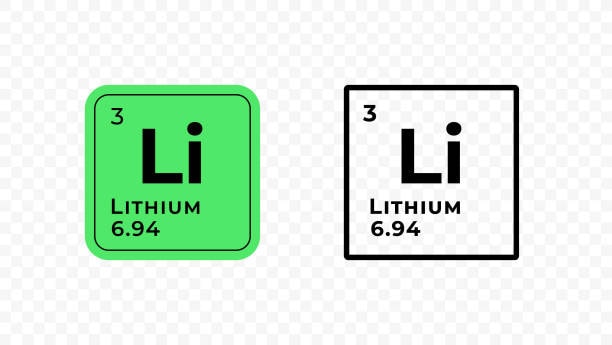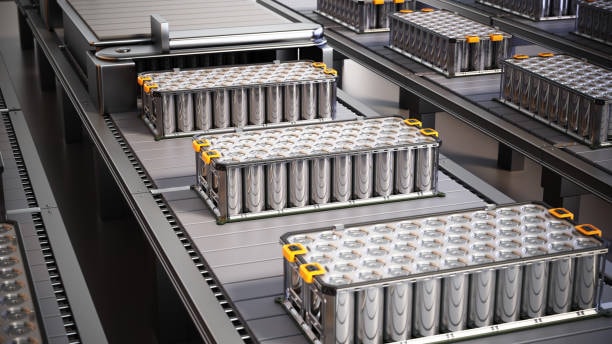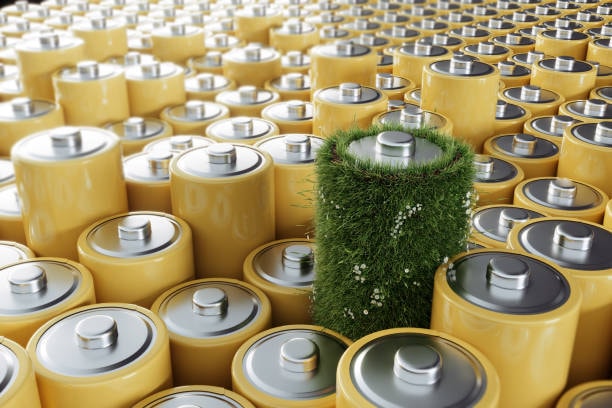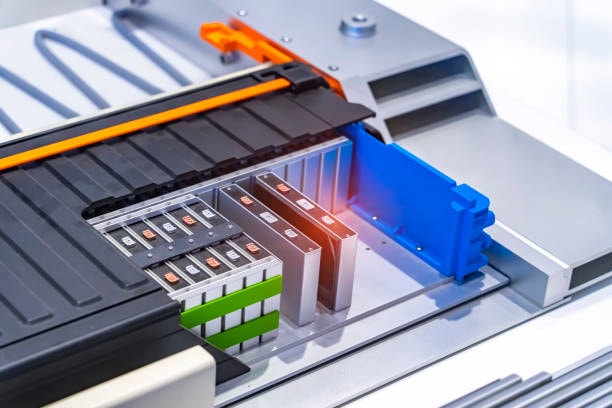
Introduction
The technological development of the highest capacity 18650 batteries and li ion batteries with increased capacity measured in milliamp hours stands as a vital problem of modern society. The rising electrical demands within our world require better energy-storing batteries that use less bulk and weight to meet expanding requirements. Researchers and manufacturers review high-capacity lithium-ion battery development through assessments of recent technological innovations while interpreting challenges that hinder progress in altering energy density limits.
The Current State of High-Capacity Lithium-Ion Batteries

The commercial lithium-ion battery technology, including 18650 batteries, has significantly evolved from its initial commercial release in 1991. Commercial high-capacity cells in modern times demonstrate milliampere hours energy density between 250-300 watt-hours per kilogram, with ongoing testing revealing potential for higher efficiencies . Modern improvements have led to electric vehicles that can travel farther distances alongside portable electronics that operate longer.
The production-scale lithium-ion batteries with maximum energy density use nickel-rich cathodes (NMC 811 or NCA) alongside graphite anodes as their standard configuration. These batteries deliver acceptable cycling performance coupled with high storage ability yet they retain aspects of trade-offs between capacity test power capacities.
Breaking the Energy Density Ceiling

The cell-level theoretical capacity limit for conventional batteries rests between 350 to 400 Wh/kg through intercalation chemistries. Newly emerging technologies succeed in breaking down present rechargeable battery boundaries, as evidenced by their claimed capacity :
Silicon-Based Anodes
Silicon presents itself as an optimal material for developing high-capacity batteries of the next generation. The theoretical store capacity of silicon, due to its lower thickness, reaches approximately 4,200 mAh/g based on calculations which allows ten times greater lithium ion storage than occurs with graphite anodes (372 mAh/g). Multiple companies are adding silicon to graphite anodes through given amounts of small volume additions to enhance more capacity while controlling the negative effects of silicon volumetric changes when charging.
The commercially available silicon-graphite anodes currently have 5-10% silicon content yet researchers have validated anode cells with higher silicon amounts in laboratory testing. The large expansion of 300% during lithiation that silicon anodes undergo is the main limitation preventing their use as complete anode materials in rechargeable batteries, compared to alternatives like low capacity graphite .
Lithium Metal Anodes
The ultimate goal in battery research is likely to find an anode made from lithium metal due to its superior capacity and minimal electrochemical potential. The electrochemical properties of lithium metal match the very top since it shows the lowest potential and achieves 3,860 mAh/g theoretical capacity making it the optimal anode choice. The successful utilization of lithium metal anodes would yield cells with 500 Wh/kg energy density potential under normal operation .
The major difficulty with lithium metal involves controlling dendrite growth because these small lithium filaments form during charging until they break through the separator to create dangerous thermal hazards and short circuits. Multiple solutions to solve this problem related to overheating and discharge re being researched using advanced electrolytes along with artificial solid-electrolyte interphases combined with physical dendrite-growth restrictors.
High-Nickel Cathodes
Manufacturers are steadily raising the nickel levels within NMC (nickel-manganese-cobalt) cathodes when producing them on the cathode side. Cathodes started from NMC 111 with equal nickel manganese cobalt amounts and evolved to NMC 811, focusing on capacity 18650 batteries with its high nickel and low manganese and cobalt composition followed by additional research for NMC 9.5.5 and higher nickel concentrations.
Higher nickel content becomes a crucial factor in achieving higher capacity while latest high-nickel cathodes produce specific capacities close to the max of 220 mAh/g. The materials encounter significant problems regarding thermal stability as well as cycle life decay rates at elevated voltages, especially in power tools .
Solid-State Electrolytes
The pursuit of new battery technology focuses on solid-state batteries as a way to achieve higher capacity, including the highest capacity 18650 applications . These batteries made possible by solid ion conductor integration show great potential to unite lithium metal anodes with high-voltage cathodes resulting in 400-500 Wh/kg energy densities, with an emphasis on managing heat alongside better battery safety features.
Research work on solid electrolytes seeks to establish multiple options which include: various ways to measure their effectiveness and efficiency.
- Shipping tolerance exists in polymer electrolytes yet these materials exhibit lower conductivity for ions
- The oxide-based ceramic electrolytes retain high ionic conductivity yet present brittleness when used as a solid electrolyte.
- Electrolytes made from sulfides provide efficient ionic transport together with processing capabilities superior to oxides.
- A combined electrolyte technology merges rewarding characteristics from diverse components
Despite their great potential solid-state batteries encounter two major difficulties, including discharge when manufacturing devices and when maintaining interface stability between the electrodes and electrolyte.
Record-Breaking Laboratory Prototypes
Scientists operating in laboratory environments have achieved truly outstanding battery specifications, for example, to figure out optimal energy densities. For example:
Despite operating at the cell level researchers developed a prototype lithium-ion battery combining prelithiated silicon-carbon anodes with high-voltage cathodes to replace traditional system for reaching approximately 350 Wh/kg of energy density.
Researchers from the Japan Advanced Institute of Science and Technology made a battery to support its performance by combining fluorinated electrolytes with silicon-carbon composite anodes which exhibited more than 80% capacity retention during 1000 cycles of operation.
Quantumscape released testing data for batteries with 400 Wh/kg energy density through its lithium metal anode and proprietary solid electrolyte method but these results need further development work.
Applications Driving the Need for Higher Capacity
The demand for maximum capacity lithium-ion batteries persists because of several specific applications and vital market applications.
Electric Aviation
Electric aviation stands as the application which requires the highest possible energy density among others. Modern electric aircraft that have limited flight distances currently operate but longer-range operations will need cellular batteries which deliver minimum 400-500 Whitworth Per Kilogram power densities. Thorough electric aviation will likely require battery chemistry developments to change things further because current progress by Beta Technologies and Lilium operates within existing battery limits.
Long-Range Electric Vehicles highest capacity 18650
Electric vehicles now reach 300 to 400 mile distances but this capability comes from heavy battery assemblies. The capability of superior battery packs, despite their higher price, extends vehicle ranges considerably or creates opportunities for building much lighter vehicles which results in better efficiency and lower total cost. The automotive manufacturers including Tesla and Lucid together with their competitors strive to enhance the energy density of their car batteries.
Mobile Electronics 18650 batteries
The performance of smartphones along with laptops and wearable devices receives exceptional advantages from increased battery storage capacity compared to low capacity options . The integration of power-consuming attributes like 5G technology and high-refresh-rate displays and sophisticated sensors causes battery life to remain the main obstacle, making it essential to compare higher capacity power cells . Higher capacity power cells would extend usage periods for devices while preserving their ability to function without limits useless.
Challenges in Developing Higher Capacity Batteries

Multiple substantial factors, including the accuracy of measurement, act as barriers to producing advanced lithium-ion batteries with enhanced capacity levels.
Safety Concerns
Higher energy density stores increased amounts of energy in reduced volumes thus increasing possible safety hazards. Manufacturers need to avoid using low quality materials and maintain parallel improvements in safety tools during the expansion of energy density. Higher nickel cathodes along with lithium metal anodes require specific attention because their reactive nature exceeds traditional materials.
Cycle Life Trade-offs capacity 18650
High-capacity energy storage materials wear out at a faster rate in comparison to their lower capacity alternatives. Silicon anodes have higher lithium storage capability than graphite but their lifespan decreases at a faster rate. Manufacturers need to achieve parallel success between high initial storage capabilities that may reduce to half over time and prolonged material longevity.
Temperature Sensitivity li ion
High-capacity materials demonstrate heightened reaction to temperature variations between extreme hot and cold conditions. Such materials face limitations regarding practical applications involving exposure to extremely hot or cold operating conditions found in electric vehicles with a large diameter that work in extreme climate zones.
Manufacturing Complexity to low capacity
Manufacturers need to design distinct manufacturing procedures and machinery to make novel high-capacity materials. Mass-production methods suitable for high-capacity materials need development by the industry to achieve necessary volumes for commercial applications.
Recent Breakthroughs
The obstacles of developing next-generation lithium batteries seem to yield to recent research advances.
Scientists from Stanford University developed an electrolyte system which permits the continuous cycling of lithium metal anodes over hundreds of cycles thus enabling the creation of lithium metal battery technology with densities surpassing 400 Wh/kg.
Scientists at the University of California San Diego designed a disordered rock salt cathode which exceeds capacity limitations without cobalt elements to create more environmentally friendly and cost-effective batteries.
Research conducted by Argonne National Laboratory produced an artificial solid-electrolyte interphase which extends the cycle life and preserves high capacity performance in silicon anodes thus advancing their commercial readiness.
The Future Landscape
New emerging technologies show promise to boost energy density levels even further during the upcoming stages.
Lithium-Sulfur Batteries
Lithium-sulfur batteries demonstrate meaningful potential to surpass traditional lithium-ion batteries by achieving 2,500 Wh/kg theoretical energy density (which has practical consequences of significantly lower values). The shuttling of polysulfides between electrodes represents one challenge for these batteries just as capacity fade is another problem area but contemporary advances in electrode structures and electrolyte properties are creating better performance outcomes.
Conversion Reaction Cathodes
Conversion reactions yield higher capacities than intercalation chemistry does for cathodes. Multiple electrons can be stored per formula unit by fluorinated carbon or various metal fluorides which results in cathode capacity reaching two or three times the current conventional material levels.
Advanced Manufacturing Techniques
Modern electrode architectures in manufacturing can make the most of high-energy components by reducing material expansion effects and enhancing ion movements. The techniques show promise to make possible the practical use of materials which have so far been too difficult to implement in conventional battery designs.
Conclusion
Advanced lithium-ion battery development stands as a top technological initiative needed for the current era because it advances modern society. The achievement of enhanced battery technology like the highest capacity 18650 will produce real-world applications such as electric aircrafts along with extended electric vehicle ranges and extended powering of smartphones past multi-day operation replace. The current rate of innovation indicates that commercial batteries exceeding 400 Wh/kg energy density will become accessible for market consumption during the subsequent few years.
Steady progress in battery capacity will emerge as researchers push forward with new material and architectural developments and industrial production of silicon-composite anode and solid-state electrolyte technologies expands. The expanded energy storage capacities will accelerate the transport electrification movement alongside promoting portable electronics while integrating renewable energy into the grid to transform our energy infrastructure for fighting climate change effectively certain amount.
